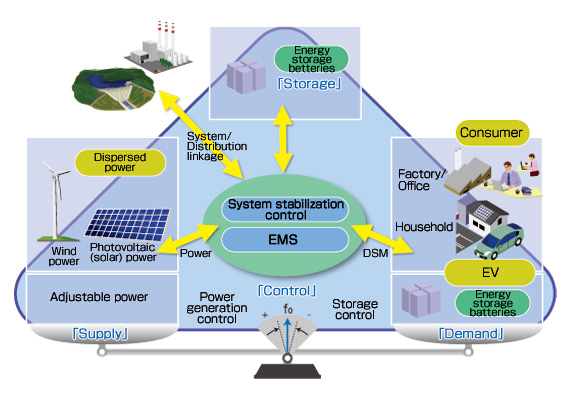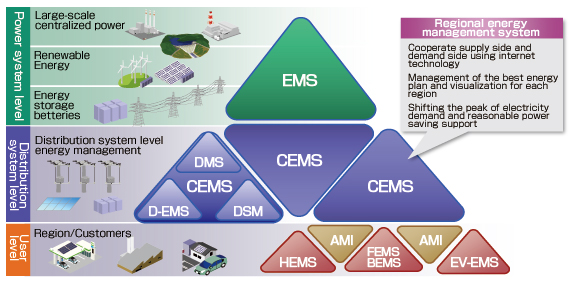Hitachi contributes to the mass adoption of renewable energy expected in the future and to a wide range of needs according to area characteristics such as “local generation and local consumption type” and “island type” by the combination of energy management “basic models”.
Hitachi realizes highly reliable energy infrastructure with expandability and flexibility via the “autonomous decentralized” system configuration.
| Supply | Traditional power generation such as thermal power and renewable energy ( such as photovoltaic (solar) and wind power ) |
|---|---|
| Demand | Home consumers, large scale consumers, such as factories and offices, and EV charging stations which are expected to increase in the future. |
| Storage | The function to mitigate the fluctuation of electricity demand and power output by the energy storage equipments such as storage of electricity and thermal energy. |
| Control | The whole optimization function by coordinating above three factors with grid stabilizing control, generation control, DSM and power supply control. |

Support minimum energy to keep up life even during an emergency. Introduce each function of CEMS and demand side according to the object function and scale step-by step and partially by autonomous decentralized system.

AMI:Advanced Metering Infrastructure
BEMS:Building and Energy Management System
CEMS:Community Energy Management System
D-EMS:Distributed Energy Management System
DMS:Distribution Management System
DSM:Demand Side Management
EMS:Energy Management System
EV-EMS:Electric Vehicle Energy Management System
FEMS:Factory Energy Management System
HEMS:Home Energy Management System